Time to declare Turag dead
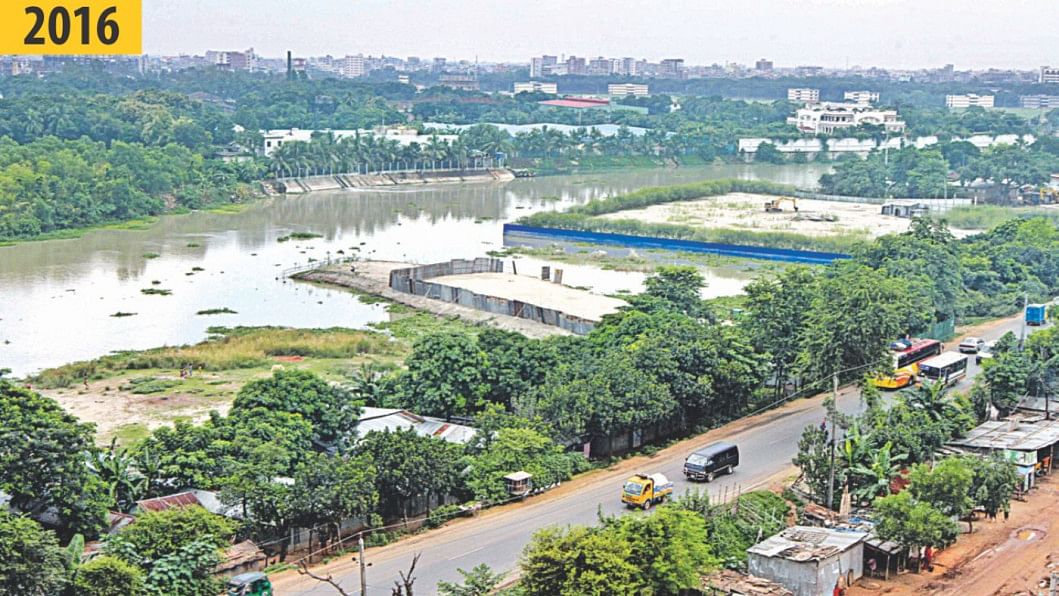
Over the years, The Daily Star has repeatedly and tirelessly raised its voice against the slow but certain death of the rivers around Dhaka due to encroachment, dumping of pollutants and lack of dredging. The government, parliament and judiciary also responded to our concerns, taking many an initiative in the last seven years.
But nothing could stop this systematic destruction of four rivers --Turag, Buriganga, Balu and Shitalakhya -- the lifelines of the capital. Powerful, rich and ruthless, these river-gobblers have no difficulty manoeuvring the legal system and the land administration, and “managing” law enforcement agencies. They remain unstoppable with the Turag fast approaching to be history.
In this report, Tawfiq Ali details the persistent neglect of our river custodian in clearing four major encroachments that are seen as the cause of Turag's imminent demise.
In the end, nobody would save the Turag river. Left at the mercy of ruthless land grabbers who continue to ravage one of Dhaka's lifelines, the river is only a shadow of its once mighty self.
“We are dismayed by the slow death of the river. It, in our childhood, used to be a mighty river and we fondly called it the Kahar Daria,” said Hafizul Islam, an elderly farmer with ancestral homestead in Machhimpur mouja of Tongi.
Today, with unbridled grabbing of the river foreshore by “land claimants,” the river is barely surviving. It has become a lean flow like a drainage ditch, he lamented.
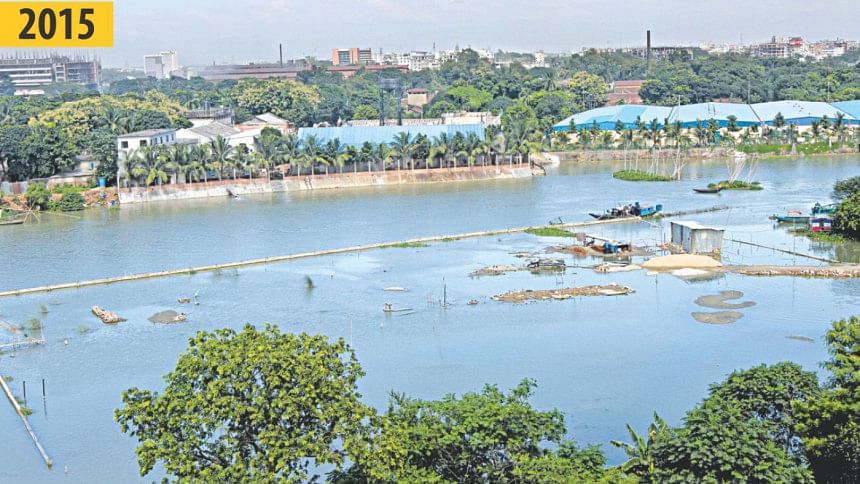
Fresh water, fish resource, marine ecology and panoramic waterfront of the river are all gone with encroachments, industrial pollution and random structures, said Shafia Begum who works in an NGO. She commutes regularly to the city from Ashulia along the bank of the Turag.
Even three decades ago, the river had all its splendour, vitality, serene beauty and wide navigability, says Shafia, who was born in Savar. “The number of grabbers multiplied only over the last half a decade.
“The river grabbers are powerful and rich, and apparently mighty,” she added, “the grabbing has been indiscriminate and appears unstoppable.”
Abdur Razzaq, a fish wholesaler and inhabitant of Abdullahpur, said the river has been killed over the past decade, “...while we have seen feeble attempts in the name of saving it.”
During several visits in the past few weeks, this correspondent saw the earth filling of the river's foreshores, the part of a shore between high- and low-water marks. Not only existing river grabbers, but also scores of fresh “land claimants” were busy with their work.
The areas grabbed some half a decade ago now stand covered with plants, trees and structures.
This Daily Star correspondent, since April 2011, has been following the destruction of the river. River laws and repeated High Court orders fell flat, it appears. Half a dozen official custodians are supposed to save the 38km river stretch from Kholamora to Teramukh across Ashulia and Tongi.
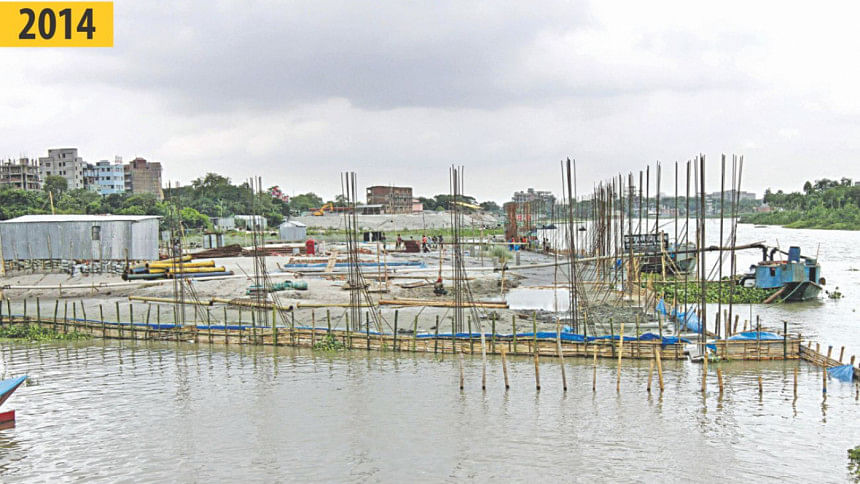
A 2009 landmark High Court judgment delineated detailed measures on how to recover the ailing rivers from land grabbers and save them from pollution. The judgement ordered the administration to demarcate the boundary of five dying Dhaka rivers -- the Buriganga, the Balu, the Turag, the Shitalakkhya and the Dhaleshwari.
This became the death warrant for the rivers. Demarcation pillars were set up along the river banks during the lean flow of dry season waterline excluding a roughly estimated 2,500 acres of river foreshores and wetlands.
It lured hundreds of fresh grabbers to start gobbling up the excluded river areas with massive earth filling.
The entire stretch of the foreshore wetlands of the Turag, between Dhour Bridge and Shinnirtek along the river embankment road across Birulia, has been indiscriminately filled up with sand dumped by dozens of dredgers around the clock. Barely five years ago was this area was part of the river flow.
The Daily Star has seen three satellite images of three sites of the Turag, one with Uttara-16 and Savar across the river, one with Uttara-18 and Savar across the river, and Diabari and Kaundia Ghat across the river, where the river has been choked by grabbers. The widths of the river there are around 30 metre.
The river widths across Mirpur, Birulia, Goranchatbari and Ashulia are also about 30 metre.
Today, claimants on the foreshore wetlands include concrete mixture plants, sand traders, real-estate developers, plant nursery owners, recreation clubs, private universities, mosques and Nou Sramik (river transport workers') League, a pro-Awami League body.
Some half-hearted and ill-equipped eviction drives failed to complete any eviction of major encroachers.
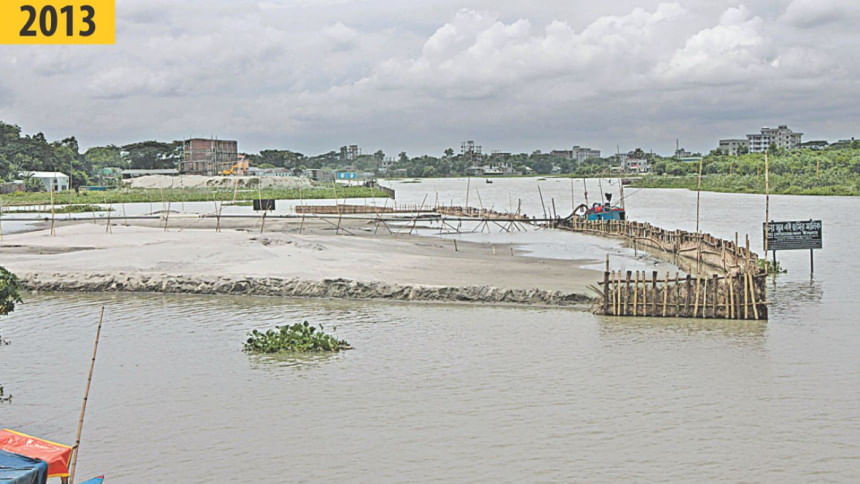
KAMARPARA BRIDGE
A land claimant occupied 1.34 acres of the Turag near Kamarpara Bridge in Machhimpur mouja of Tongi with concrete pillars and heavily reinforced retaining walls.
None of the half a dozen authorities designated to protect rivers, wetlands and environment stopped this river occupation.
It required a High Court order on July 24, 2014, for the BIWTA and Gazipur and Dhaka district administration to act. On August 26 that year, the district administration authorities and BIWTA jointly embarked on a three-day drive to remove the huge earth filling.
But they called off the drive mid way.
They had said that they could not procure the right equipment nor could they move tugboats and pontoons loaded with bulldozers and excavators up the river because of several low clearance bridges.
After keeping quiet for a couple of years, the land claimant erected the fencing again and got the encroached area covered with plants and trees to make it look like an ordinary piece of land.
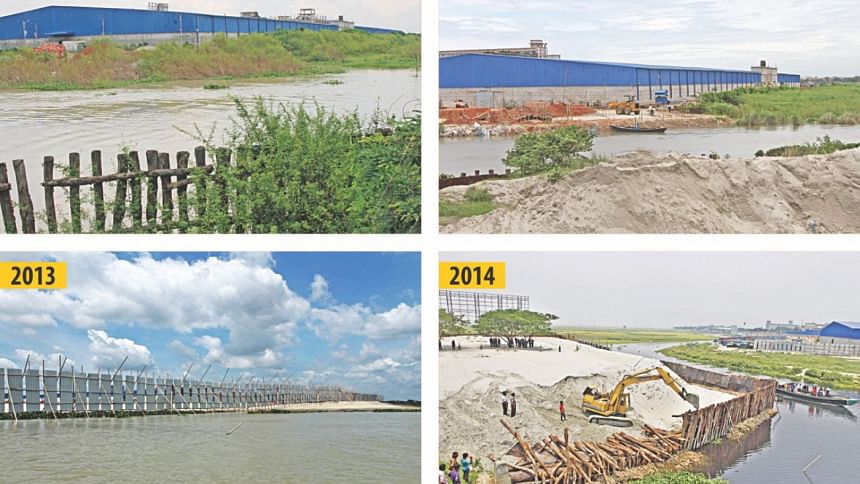
DHOUR BRIDGE
There were two similar incidents of encroachments near Dhour Bridge.
Rajdhani Unnayan Kartripakkha (Rajuk) on March 10, 2014, “equipped” with 10 men with six sledgehammers came to evict a gigantic under-construction spinning mill and a huge wall on a 9,292-square metre designated flood-flow zone of the Turag near the bridge in Bhadam mouja.
All they could do was to knock a hole in the wall. The factory owner promised he on his own would bring down the rest and the demolishing team left satisfied.
The factory owner then obtained a High Court stay order on the eviction for four months and finished building the factory.
Rajuk did nothing.
An unidentified claimant on the other side of the river had filled a huge chunk of the river and wetland near Dhour Bridge in Bhakral mouja choking the river.
The BIWTA and the Gazipur district administration carried out an eviction drive but this too was a mere show as the ill-prepared and ill-equipped BIWTA team could only remove some timber and concrete pillars of a wall.
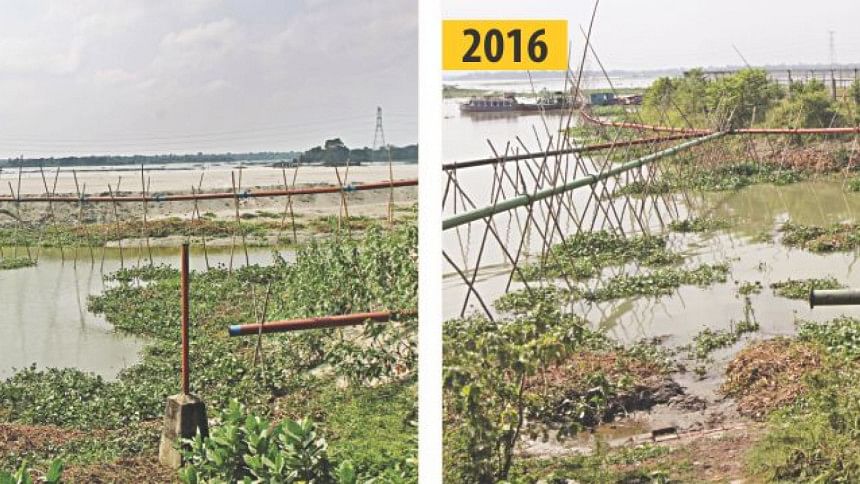
BIRULIA BRIDGE
The story of unhindered river grabbing is the same on both sides of this bridge. Grabbers took advantage of the river boundary pillars that excluded its foreshores.
Half a kilometre north of Birulia Bridge, an unidentified encroacher filled nearly an acre of the river around three years ago. No eviction drive was carried out there ever.
It now stands as a land with plantation and fencing with an ownership claim of a real-estate developer.
WHAT AUTHORITIES SAY
SM Alam, deputy commissioner of Gazipur, said, “The river encroachers come back immediately after being evicted and we don't have adequate manpower to constantly guard against that.
“But at present, there is no incidents of grabbing in the Turag,” he claimed.
Rajuk chief town planner Md Sirajul Islam said they could not prevent earth filling of wetlands and river foreshores as demarcation pillars set up by the district administration authorities excluded the foreshore, an action that offered the river grabbers the chance for grabbing.
The BIWTA in some cases issued licences to use the foreshore that, in a way, encouraged and smoothed the way for land grabbers, he said.
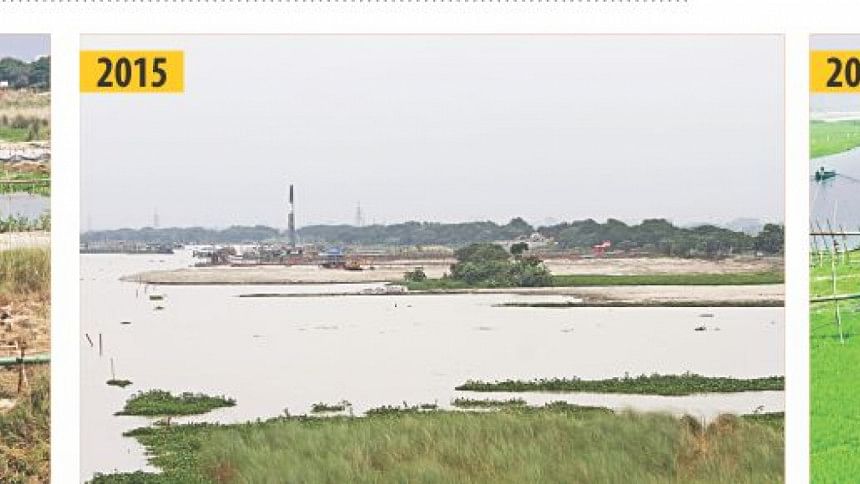
“We have too little logistic support and manpower to safeguard the river wetlands,” he said.
Kamrul Hasan Sohag, deputy town planner of Rajuk, said they just served around 20 notices and filed two complaints with police against the encroachers of Turag river wetlands.
They did not go for filing cases against them or carrying out eviction drives, as “the higher authorities did not instruct them to do so,” he said.
Gulger Ali, BIWTA joint director and port officer of Dhaka River Port (Sadarghat), said none of the existing businesses on the river foreshores had BIWTA licences.
Why don't they evict the river grabbers then?
Because faulty demarcation pillars had not been rectified yet, he said.
They have found nearly 1,000 pillars set up at wrong locations along the Turag and the Balu and the issue has been kept unresolved since 2012.
He claimed that there were cases of encroachment into the Turag river only at four places along the embankment stretching from Shinnirtek to Dhour Bridge and that, “There are no other incidents of encroachments on the Turag beyond the existing demarcation pillars.”
When he was told of specific incidents near Kamarpara Bridge and in Birulia, he stood his ground.
Pressed further on why they do not protect the foreshores on the basis of a map jointly prepared by the BIWTA and district administration in 2006, he said, “We can do that only if the shipping minister asks us to do so.”

 For all latest news, follow The Daily Star's Google News channel.
For all latest news, follow The Daily Star's Google News channel. 


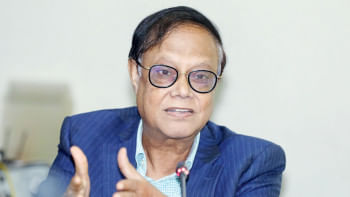
Comments